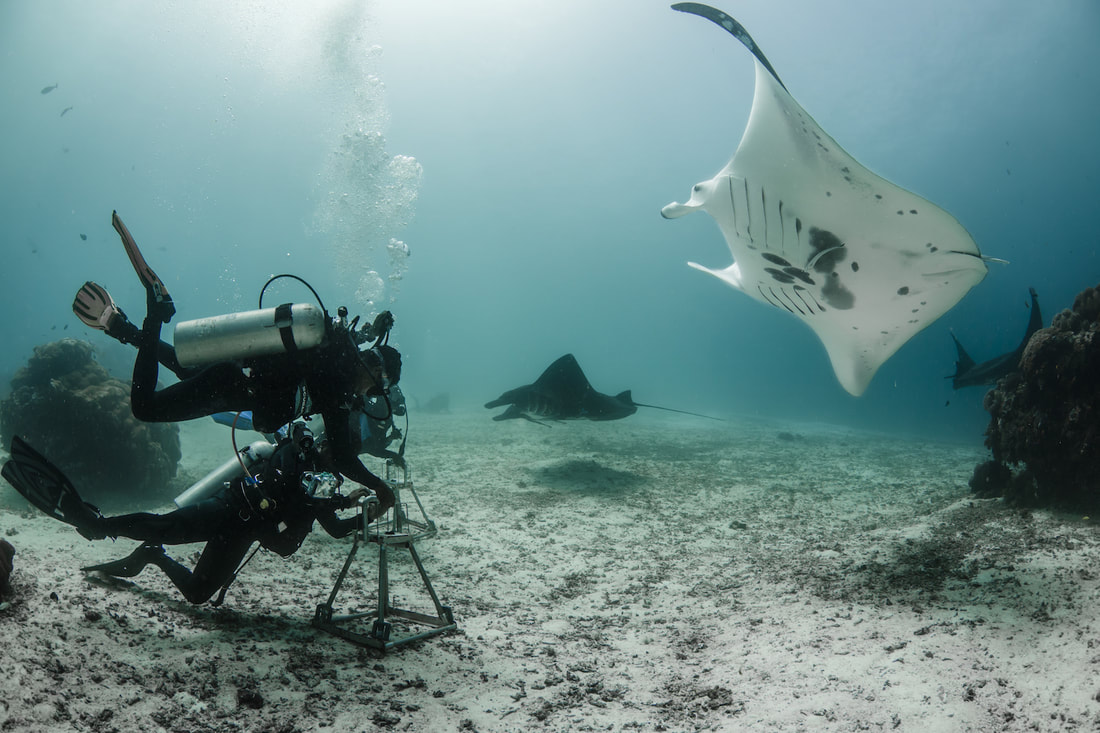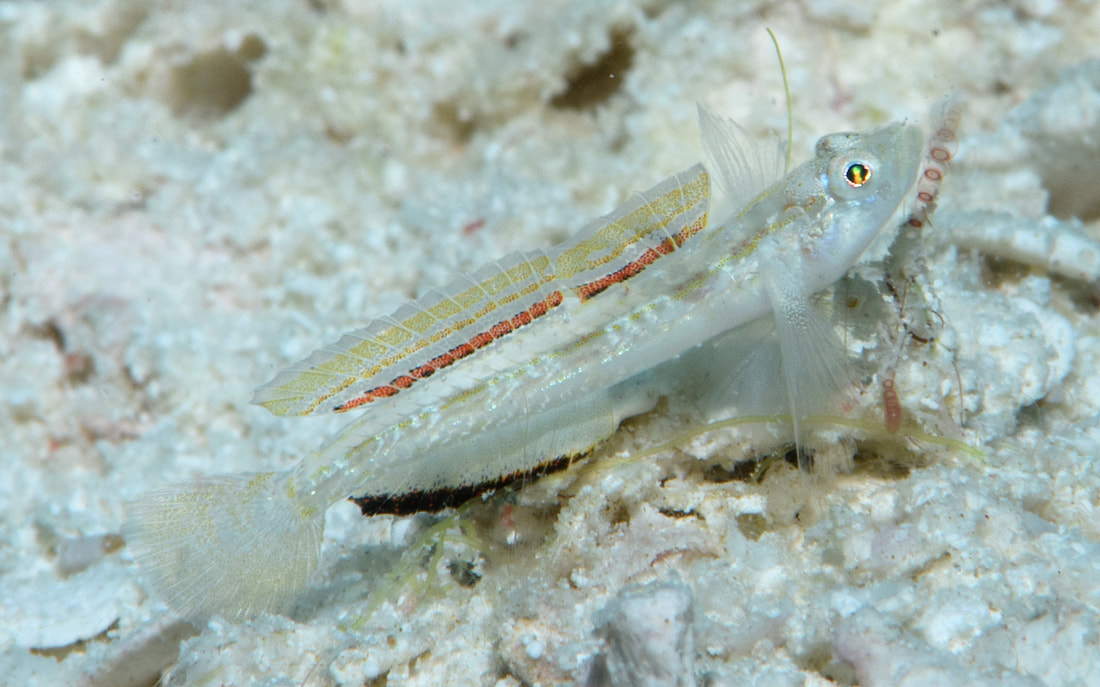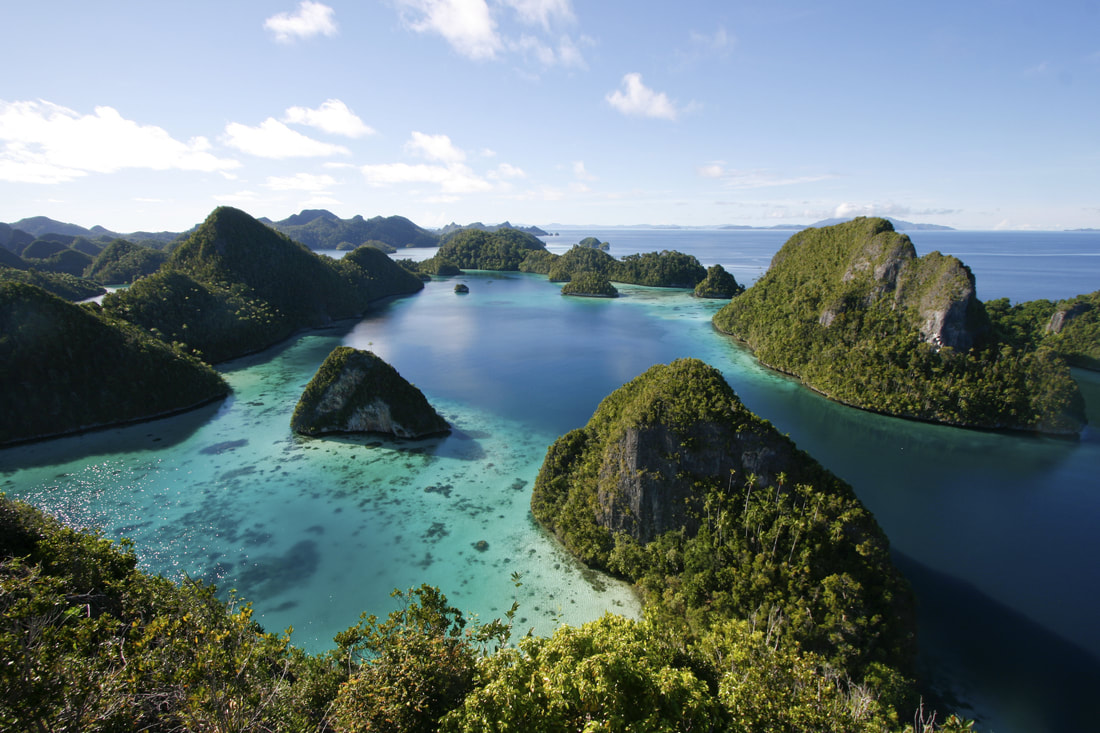|
Raja Ampat Scientific Expedition Uncovers New Manta Ray Data and Fish Species
By Christine Amour-Levar Humans have identified some two million species of plants, animals and microbes on Earth, but scientists estimate there are millions more left to be discovered. On a recent scientific expedition to Raja Ampat in West Papua, one of the most remote corners of Indonesia’s vast archipelago, world renowned Conservation International Scientist, Dr Mark Erdmann and famed Ichthyologist, Dr. Gerry Allen, discovered new manta ray cleaning stations and two new species of fish – the Grallenia Goby (pictured below) and the Silhouette Goby, the names of which are yet to be decided. Raja Ampat is considered the global center of tropical marine bio-diversity and is referred to as The Crown Jewel of the Bird's Head Seascape, which also includes Cenderawasih Bay and Triton Bay. It is home to more than 600 species of hard corals equaling about 75% of known species globally, and more than 1,700 species of reef fish which is the richest in terms of biodiversity comparing to the size of the region in the world. Endangered and rare marine mammals such as Dugongs, whales and dolphins including orcas inhabit Raja Ampat's waters. The area is also a rich nesting ground for sea turtles who travel from as far as Hawaii and various parts of the Atlantic Ocean to lay their eggs on Raja Ampat's pristine shores. The seven-day expedition sought to fill in knowledge gaps in the population and migration patterns of manta rays in Raja Ampat, as well as survey coral reef fish biodiversity in some of its lesser-visited areas. Armed with a team of Conservation International and Manta Trust scientists, manta ray tagging equipment and cutting edge drone technology, the trip was a notable progression from Dr. Allen and Dr. Erdmann’s typical journeys, and offered the luxury accommodation and five-star hospitality from Indonesia’s luxury private charter vessel Rascal and her crew around the clock. Dr. Allen shared: ‘Rascal was able to take us to Ayau — an area off the beaten path. The biodiversity in these waters is overwhelming, and even after 20 years of diving in Raja Ampat it still continues to amaze me. There is so much we have yet to discover and we are still finding new fish species on most expeditions to Raja Ampat.’
The expedition immersed the team into Raja Ampat’s fascinating unstirred waters, local environment, culture and sustainability. As a result, they made scientific headway with the underwater discovery of a new manta cleaning station at Dayan (off Batanta Island), identifying at least 25 new manta individuals, and another cleaning station in Ayau. The trip was also pioneering in terms of surveying technique, with the successful application of brand new drone technology to survey for feeding mantas, playing a vital part in the discoveries. Dr. Erdmann explained: ‘Until recently we’ve used boats to survey for mantas feeding in new areas, but due to the nature of the species, this approach is frequently challenging and time-consuming; as mantas are black on top and white underneath, they can be quite difficult to spot cruising beneath the surface, particularly when the sky is overcast. From a vantage point 50-100m above the sea surface, a drone can see much further than the human eye and avoids the glare on the sea surface we frequently have to deal with when scanning from boats. By using them in our efforts, we can cover a large area of sea significantly faster and more effectively’. The drones also allowed for monitoring of manta ray feeding and cleaning behaviour in shallow waters. Conservation International is currently training Indonesian scientists to use this new technique during future manta expeditions. Dr. Mark Erdmann and Dr. Gerry Allen are highly regarded for their contribution to marine biology. With twenty species of fish named after him and having described over 500, Dr. Allen, together with Dr Erdmann, were thrilled to discover at least two new species of fish whilst on the Rascal voyage. Additionally, they recorded seven species of reef fish not previously known to inhabit the Bird’s Head Seascape, proving once again that its waters are the epicentre for marine biodiversity. The area's massive coral colonies along with relatively high sea surface temperatures, also suggest that its reefs may be relatively resistant to threats like coral bleaching and coral disease, which now jeopardise the survival of other coral ecosystems around the world. The Raja Ampat islands are remote and relatively undisturbed by humans. The high marine diversity in there is strongly influenced by its position between the Indian and Pacific Oceans, as coral and fish larvae are more easily shared between the two oceans. Raja Ampat's coral diversity, resilience, and role as a source for larval dispersal make it a global priority for marine protection. Watch this short film about the expedition on board the Rascal: |
Details
AuthorChristine Amour-Levar Archives
December 2023
Categories
All
|



 RSS Feed
RSS Feed